Bosnia bears its battle scars. The war that ripped through the country in the 1990s is still very much present in its architecture.
In an odd way, these reminders of the war have become a tourist attraction of sorts, from the Sniper Tower in Mostar to the abandoned Olympic bobsled track in Sarajevo and everything in between.
While I don’t wish to paint Bosnia as a place only of sadness and grieving, I think it’s important to understand the history of the country and pay respects to the victims of the recent wars should you choose to visit this wonderful country.
However, that is to say that Bosnia & Herzegovina does make a fantastic destination for dark tourism, but of course, you should visit respectfully and with an open attitude to learning about the history rather than a purely macabre interest.
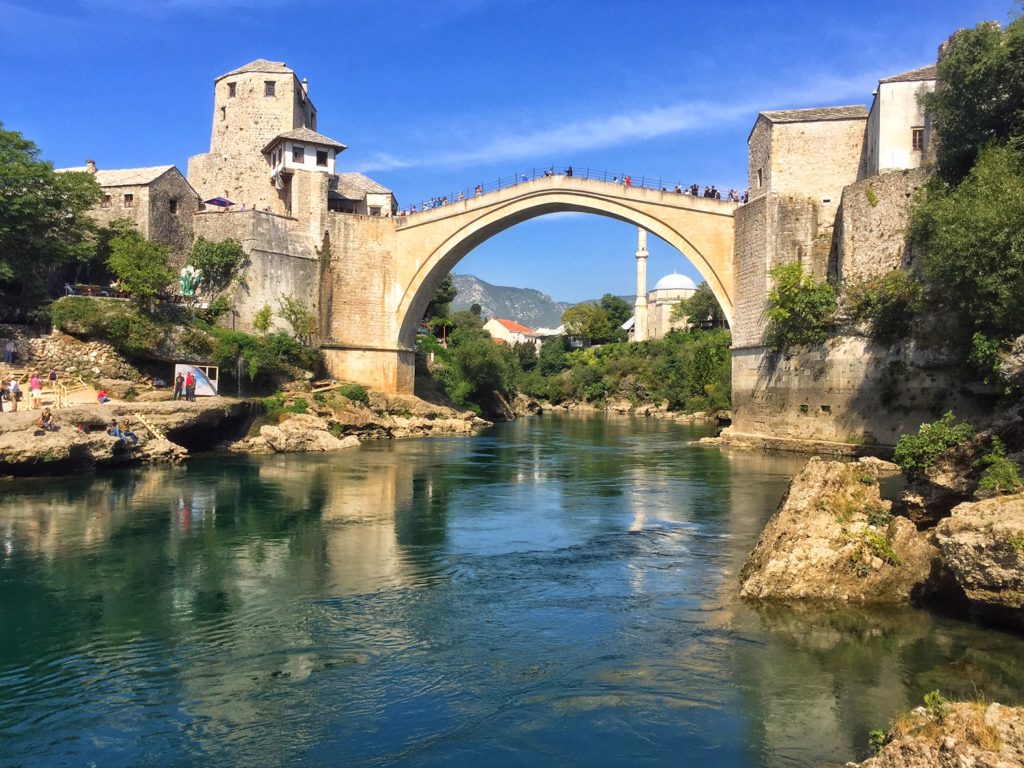
That said, Bosnia is more than just a war-torn country. It is a place of unrivaled natural beauty and history. It has everything from a tiny patch of coastline to incredible mountains to gorgeous rivers and waterfalls.
But as a history geek slash habitual melancholic, I feel compelled to write up this guide to understanding the modern-day ruins of Bosnia, so you can understand the challenges the country has faced and what it has to recover from.
Especially in light of the vitriol leveled towards refugees worldwide – particularly Muslim refugees – I think it’s important to remember and pay respects to the human costs of hatred, war, and violence. As the poignant graffiti outside the Mostar sniper tower reminds us: “we are all living under the same sky”.

Table of Contents
Mostar
Mostar is a wonderful city worth spending several days in, but it’s quite small – you can easily see the highlights of Mostar in a day.
If you’re into urban exploration, here are two destinations that should be on your list.
The Sniper Tower
The Sniper Tower is a former bank in the center of Mostar. As Yugoslavia broke apart, the wounds of dormant ethnic tensions reopened, causing widespread violence between ethnic groups in what is now Bosnia and Herzegovina.
Serbs and Croats used the bank as a sniper tower to shoot their Muslim neighbors, the Bosniaks, during the war, mostly in 1993-1994
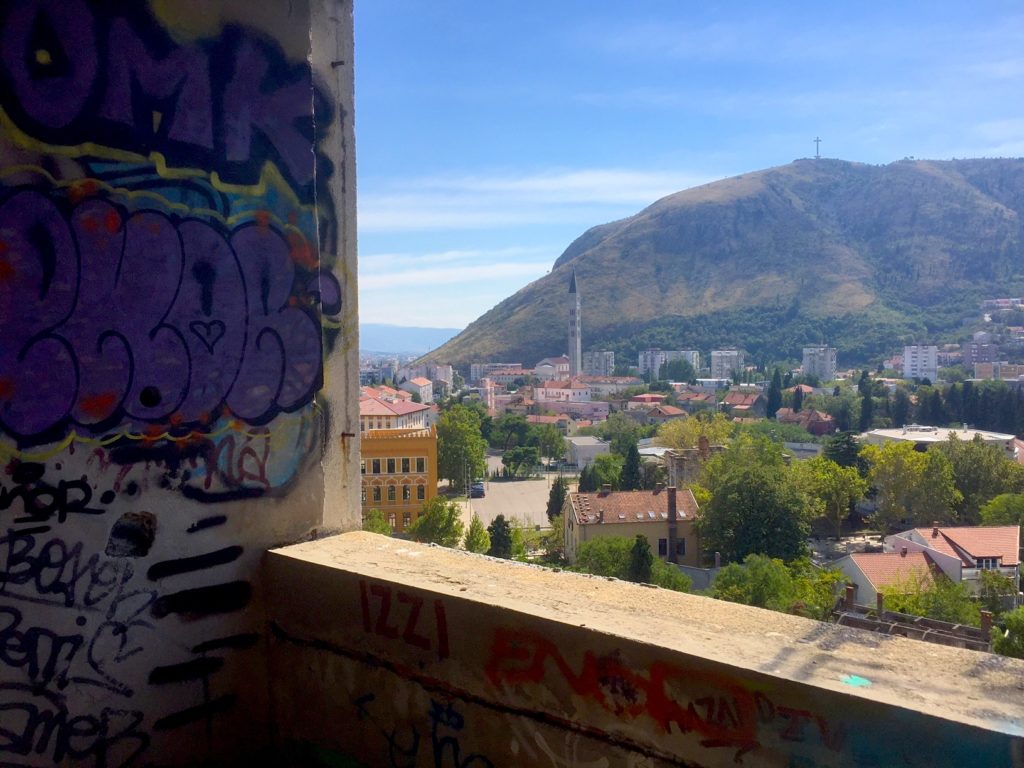
If you’re on the Muslim side of the river (same side as the bus station), you’ll need to cross the Old Bridge and walk through the Old Town. Once you get to the main road (Bulevar) you’ll turn right and follow it for about 10 minutes until you hit the Spanish Square (Spanski Trg).
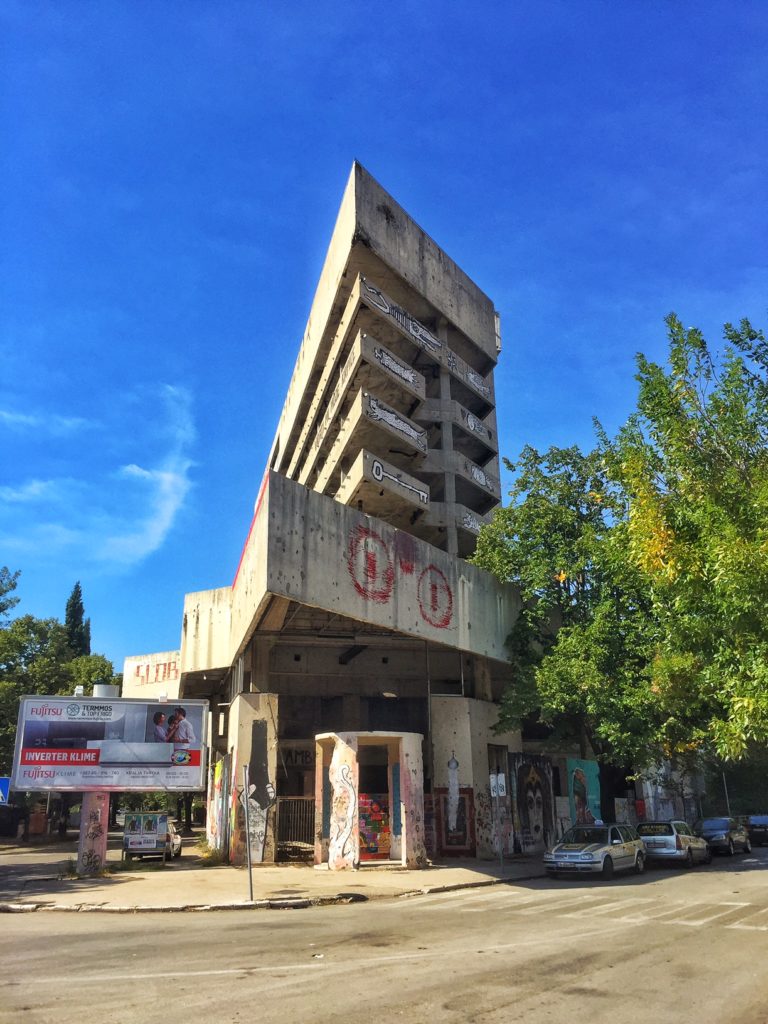
You’ll be confronted with a menacing looking abandoned triangular building. It’s hard to believe that less than thirty years ago, it was a fully functional bank. There’s graffiti all along the outside, and it’ll look like there’s no way in.
Technically speaking, there isn’t. Walk around the back of the building, where there’s a courtyard and a lot of apartment windows. It’s a little easier to enter here by first scaling one of the smaller cement blocks then pulling yourself up and over the ledge. Be careful when dropping down onto the ground floor, as there is broken glass everywhere.
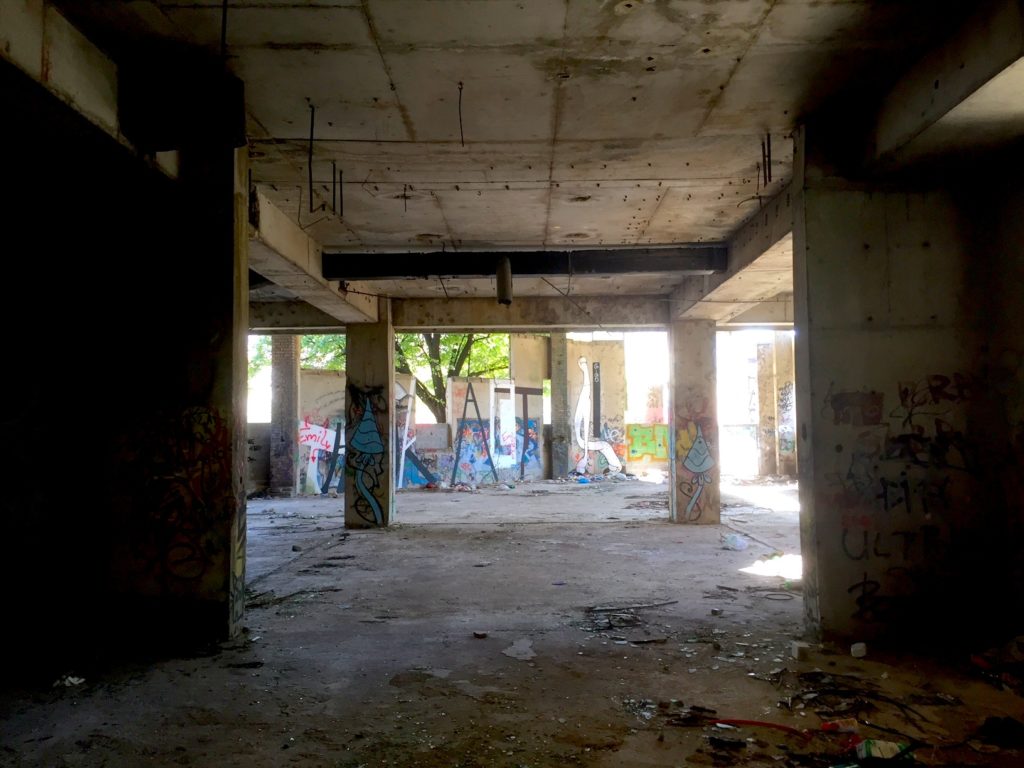
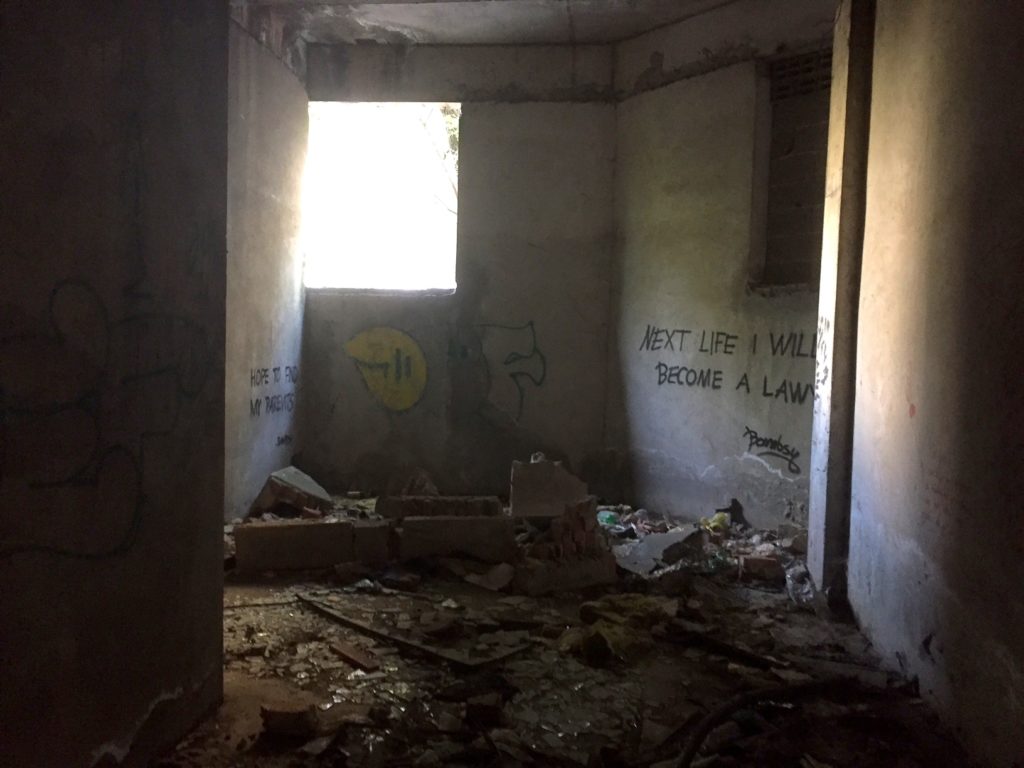
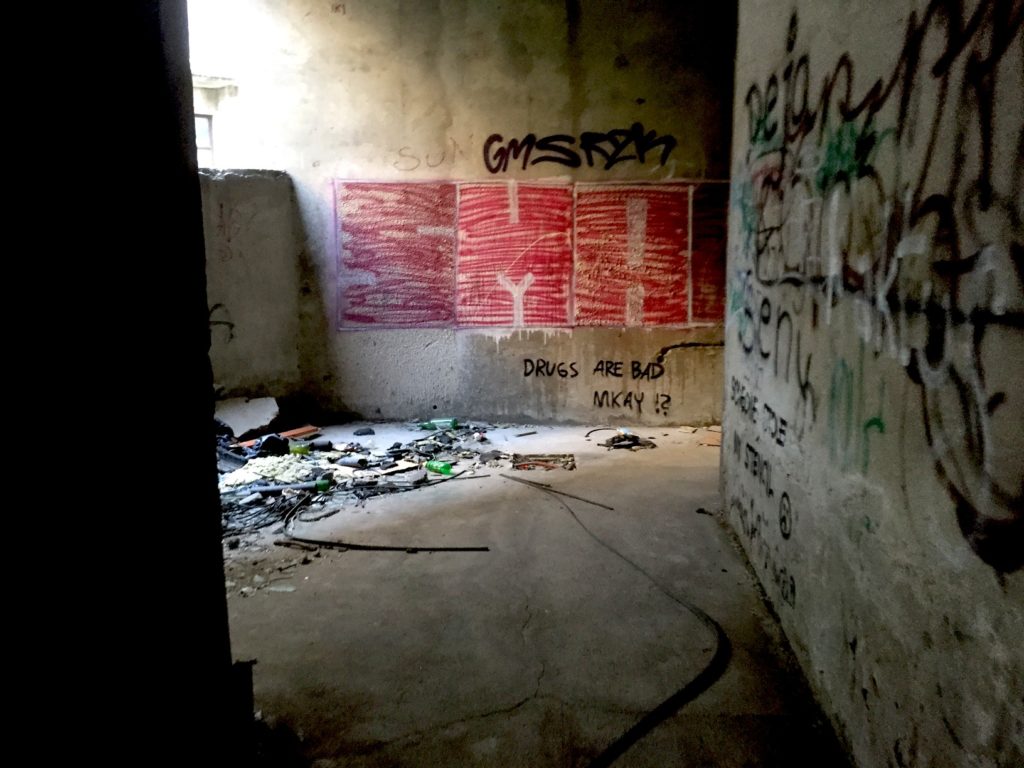
Being inside the tower is haunting. Glass, trash, and 2-liter plastic bottles of cheap beer are everywhere. It’s clear that people have turned this building into something else entirely.
For some, it’s a home for the down and out; for others, a place to get drunk and scribble on the walls; for others, it’s a bit like rubbernecking a traffic accident.
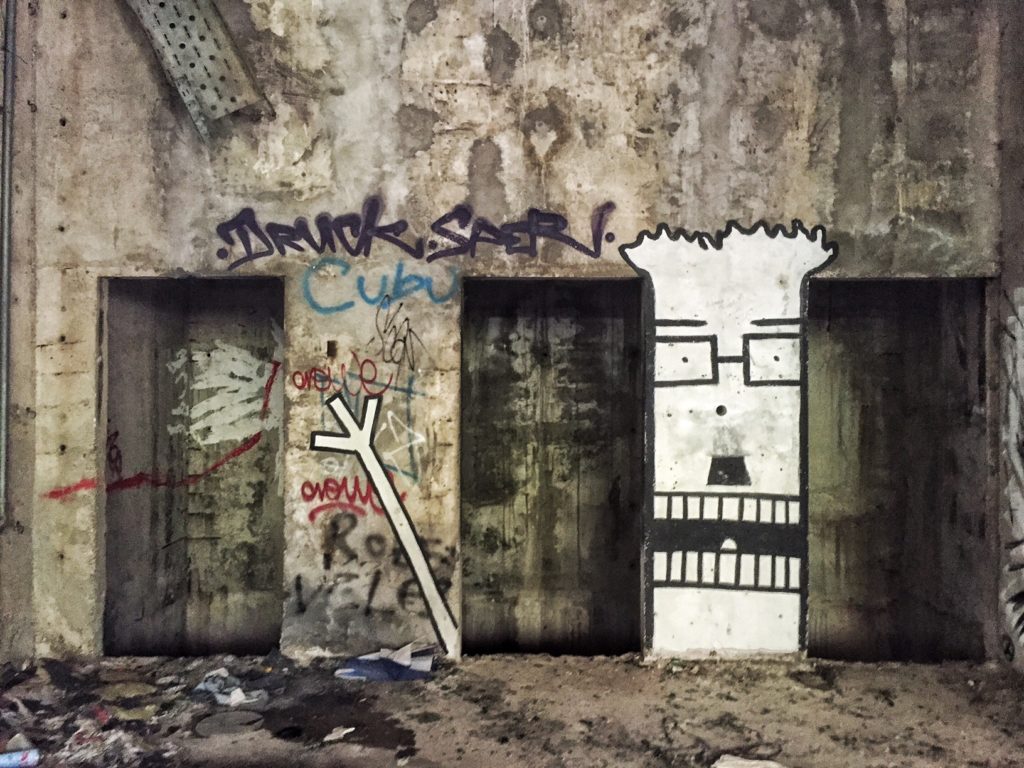
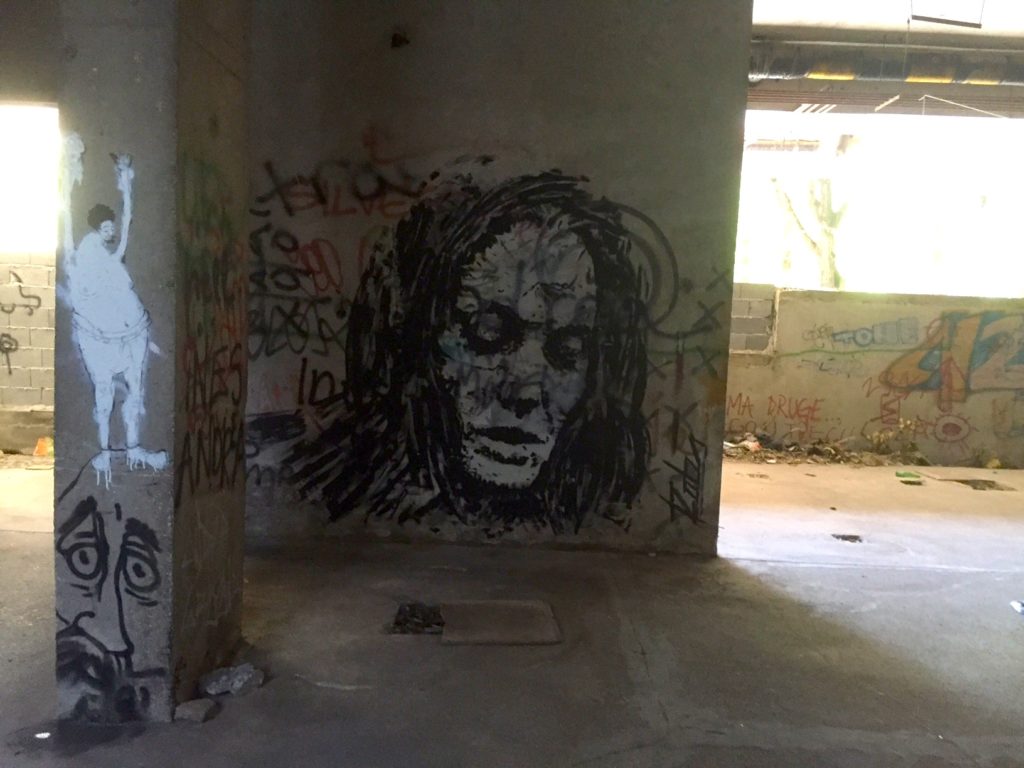
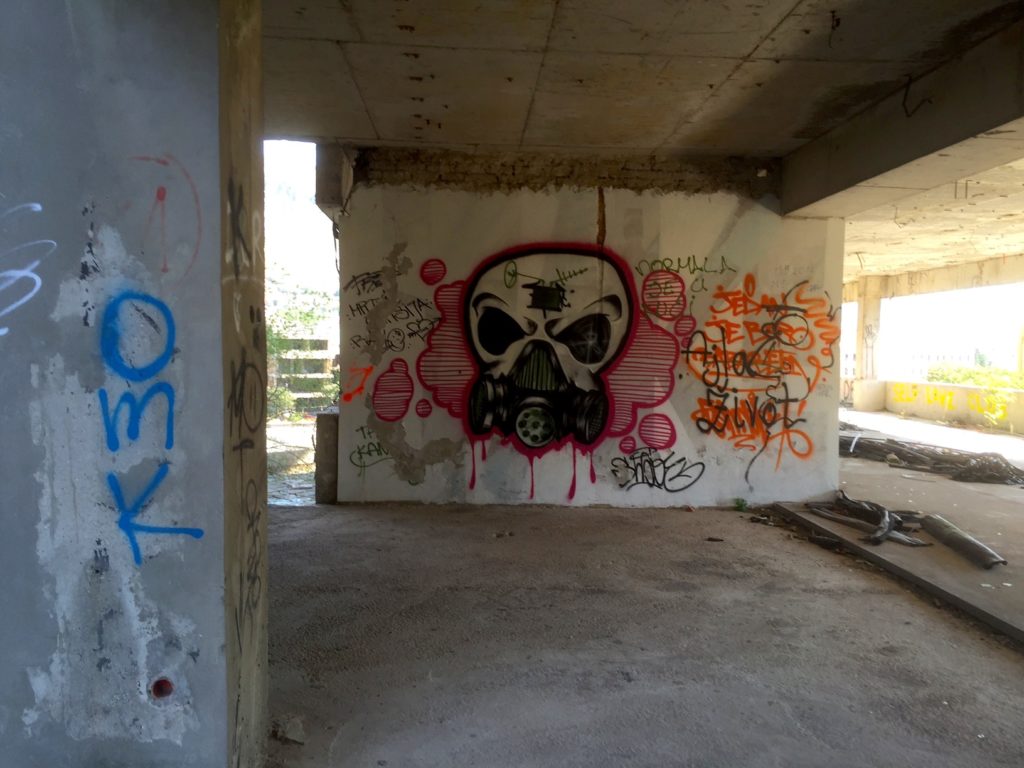
If you climb to the top (which I recommend doing, as it is a moving experience), please be incredibly careful. There are absolutely no walls anywhere near the stairs – one wrong move and you could be seriously injured or even killed.
This is really not an experience for those who are afraid of heights. I never thought I was until I got there. There’s also a small gap in the middle of the staircase that you could easily fall into and break your leg. Really, don’t be stupid and go here after one too many Sarajevsko beers or rakijas. Keep your wits about you.
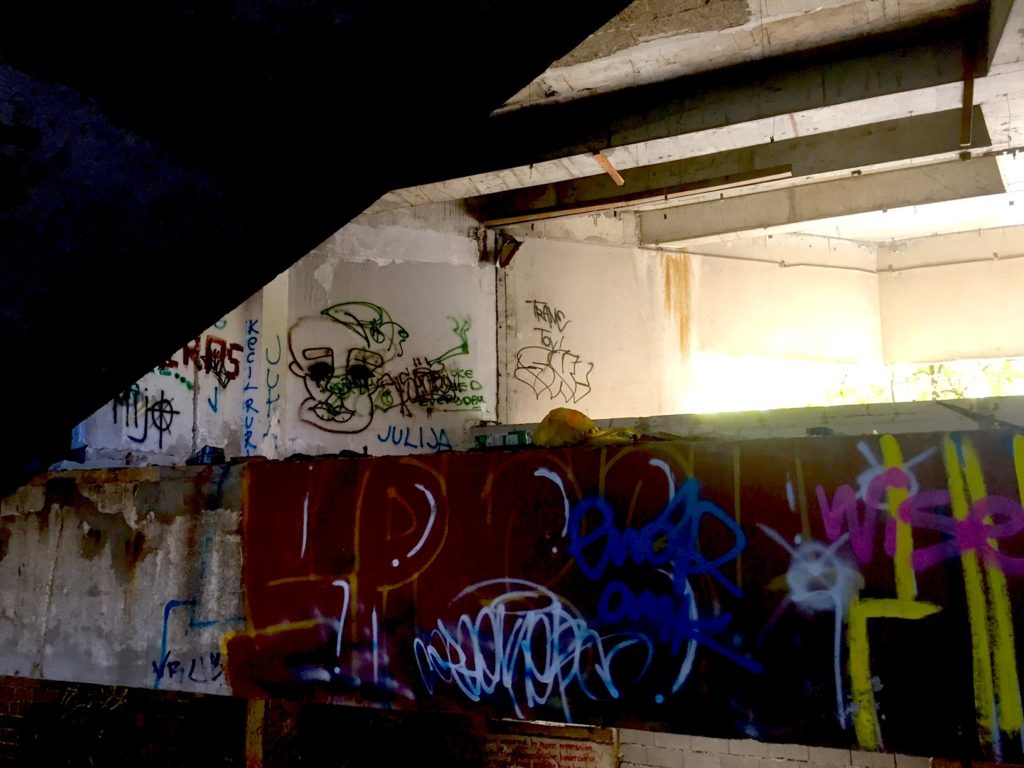
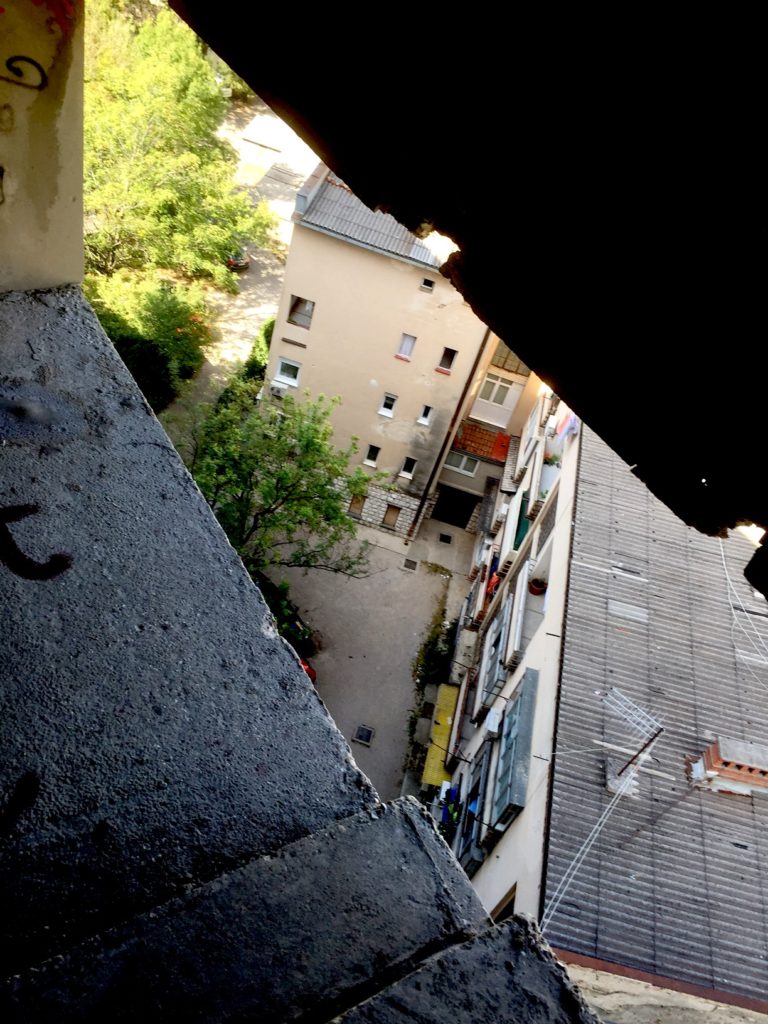
Another note: please be respectful of this place. I went with a girl from my hostel and she was giggling, cursing, and taking selfies all over the building, and it made me sick to my stomach.
As we left the tower, kids from some sort of international exchange program were traipsing up their stairs, swathed in flags of their home countries, also loud and giggly. I even saw a German girl in a fucking dirndl and German flag as if it were Oktoberfest. Dude, people died here. If you visit, treat it with respect.
A Walk Down Maršala Tita
If you come into Mostar by bus, you will likely walk down Maršala Tita, the main road on the Bosniak side of the river. As you walk down the street, you’ll see bombed out buildings where life – if not human life – has begun to take root.
Tree branches tumble out of blown-out windows. Signs warn against entering the buildings. I’d listen to these warnings. The Bosnian government is almost certainly not caring for these buildings and there’s no guaranteeing the structural integrity of any of these buildings.
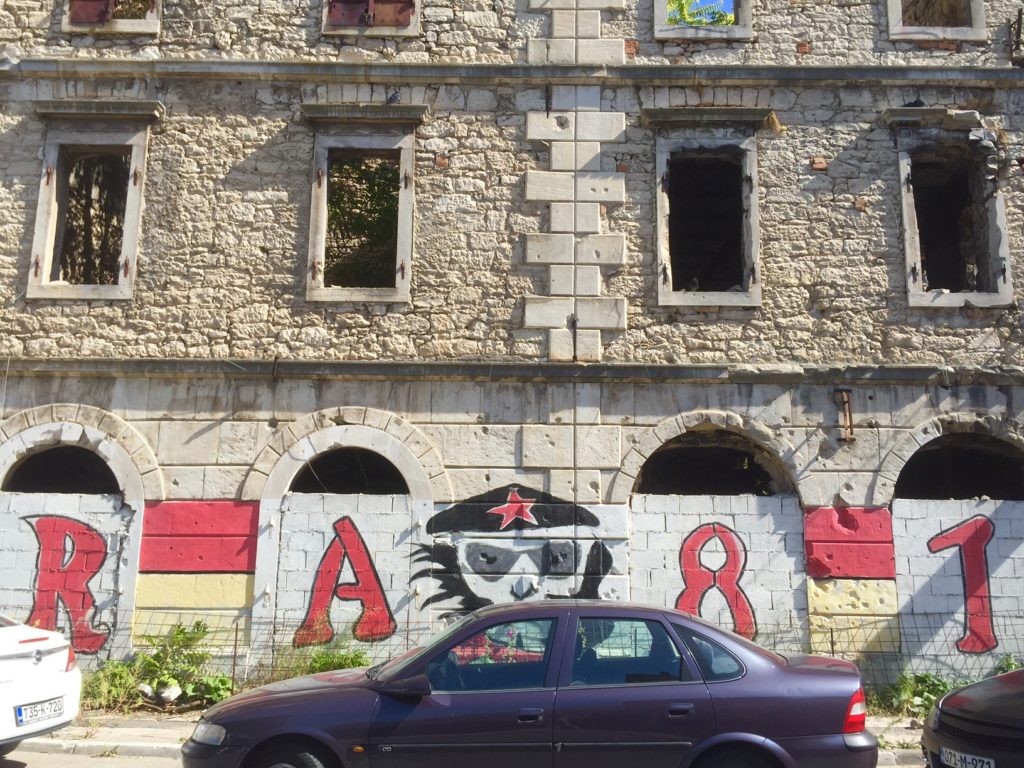
As you’re walking from the bus station towards the Old Town, you’ll likely pass the old mosque and the Muslim graveyard. Note that nearly every single gravestone you’ll see was erected in 1993. Seeing this mass of gravestones with lives lost too young was one of most heartbreaking moments of my entire trip.
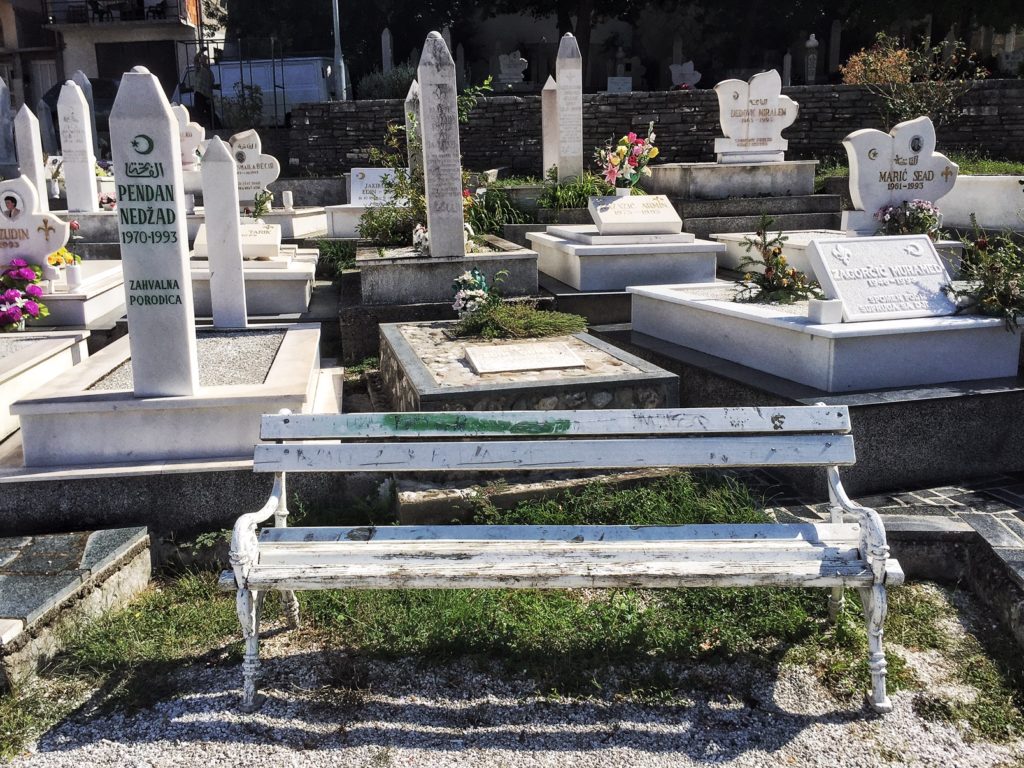
Sarajevo
The abandoned Olympic bobsled track
Sarajevo hosted the winter games on behalf of Yugoslavia in 1984. Less than 10 years later, the city would be under siege on all sides by Serbian forces. The siege would last 44 months – nearly four years – and claim the lives of tens of thousands.
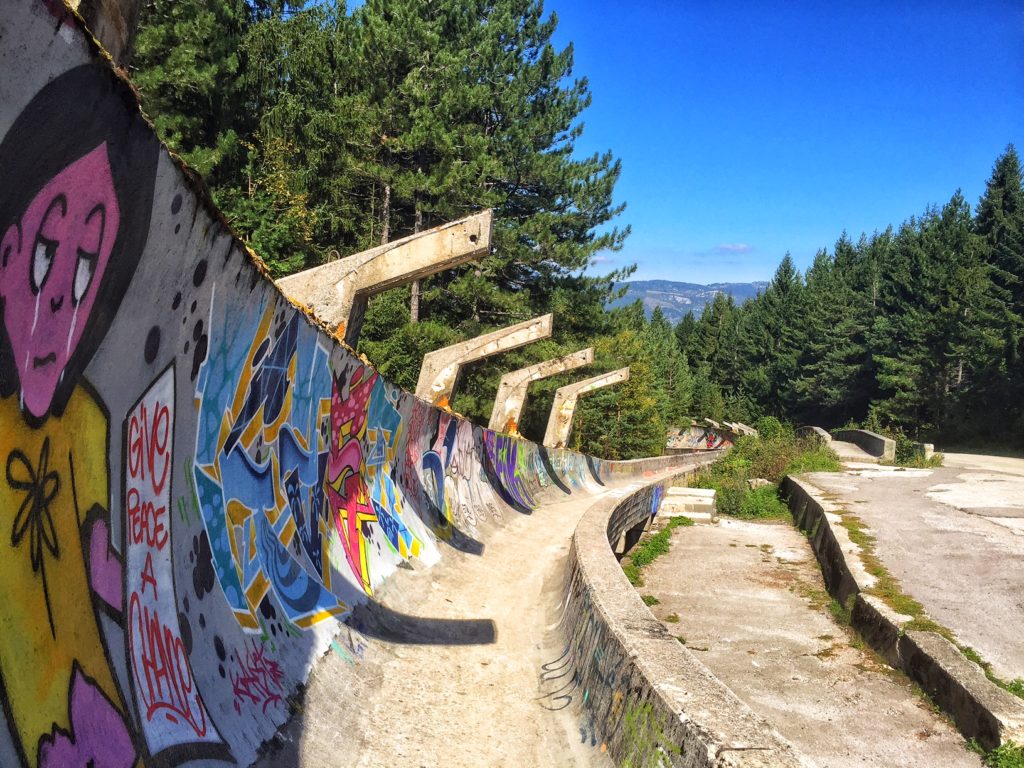
What happened in Sarajevo was a little different than Mostar. Bosniaks, Croats, and yes, Serbs, were all trapped together – everyone who refused to leave the city they loved and grew up in was stuck. As such, the city feels a little more integrated and cohesive than Mostar, a city where I felt a faint but live wire of tension coursing through.
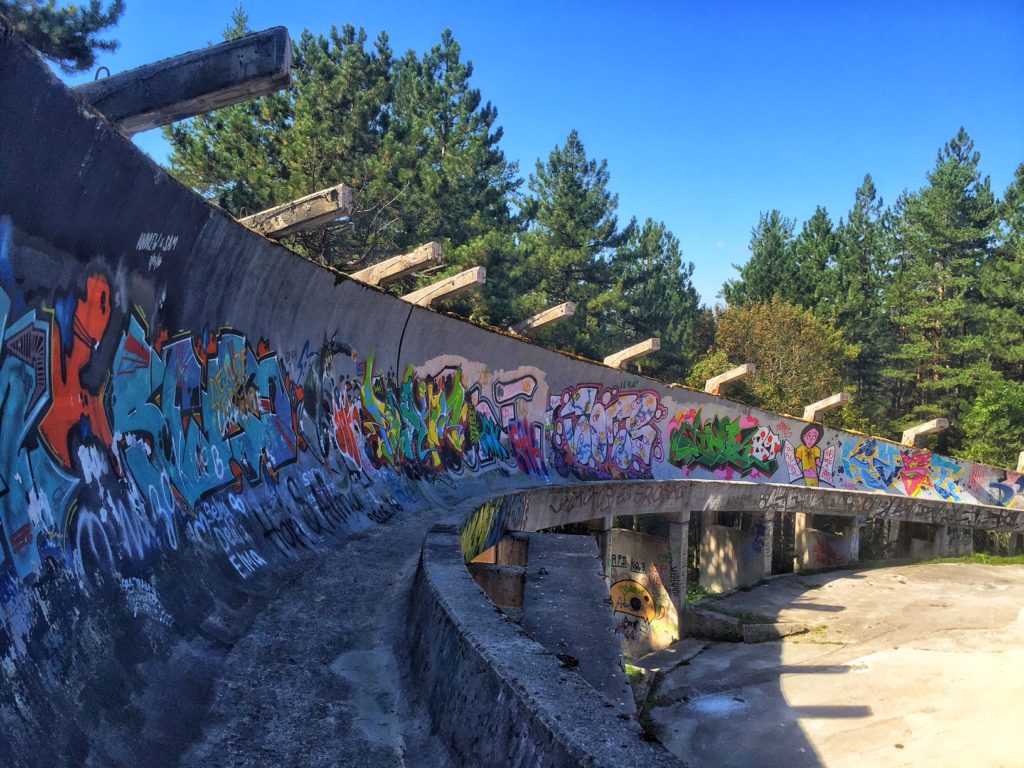
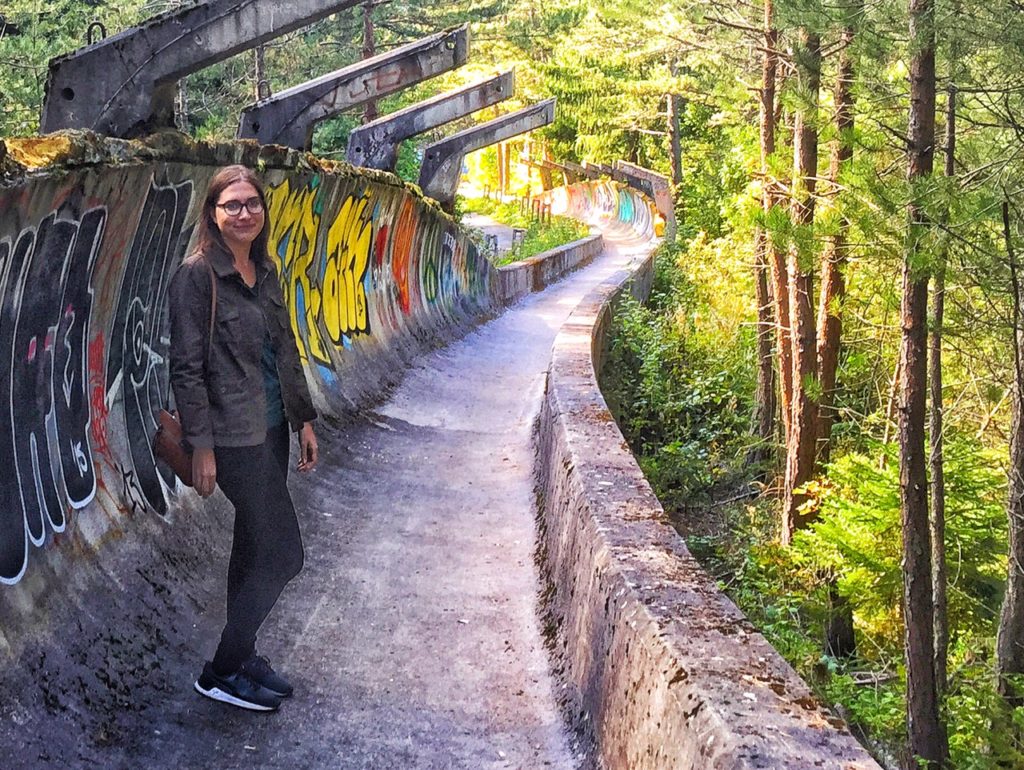
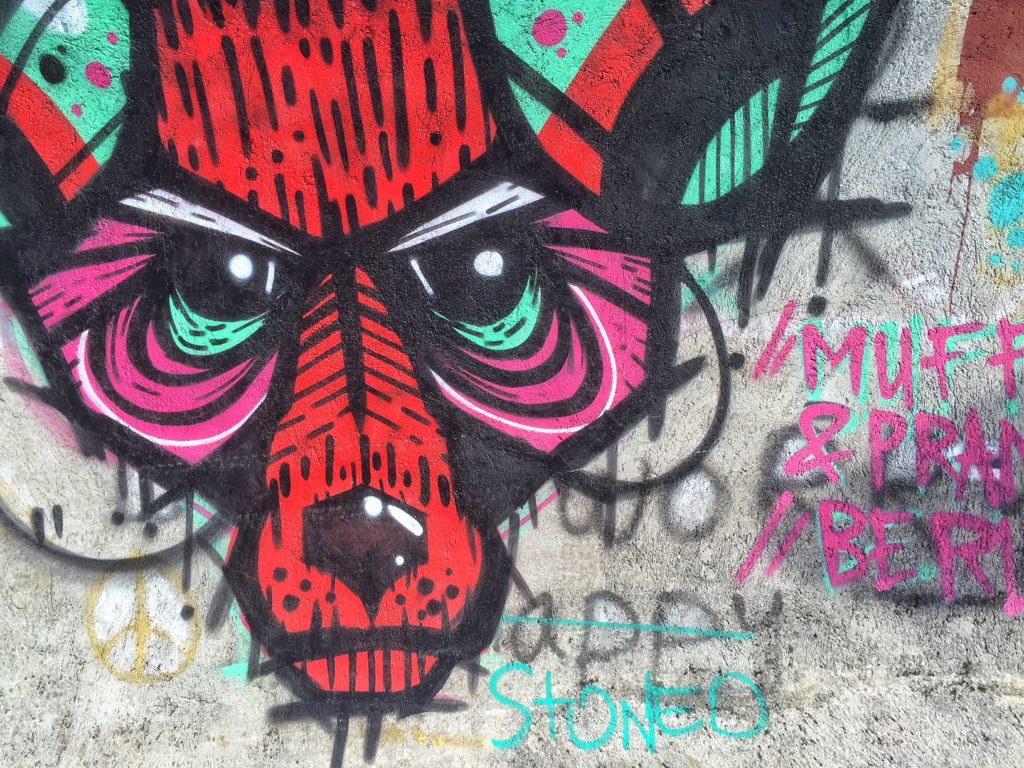
It’s sad to see this place so truly abandoned. What was once a place of national pride, patriotism, hope, and celebration of human endurance is now just a mostly-forgotten chute of concrete in the middle of the forest. At the same time, I find some sort of comfort to the way the forest is reclaiming this bobsled track. Moss is growing over the cement on the sides of the track, as if saying, in time, nature will cover all the blemishes men have left behind.
To get to the Olympic bobsled, it’s best to take a cab or a tour — unless the weather is nice and you fancy a 2 or 2.5 hour hike. I took a semi-private tour (with one other traveler) of the bobsled and the Tunnel of Hope for 25 euros organized by my hostel.
Tunnel of Hope
During the siege of Sarajevo, thousands of Bosnians dug a tunnel in order to obtain necessary items: food, arms, and of course – this being Eastern Europe – cigarettes. It’s located near the Sarajevo airport, and you’ll need to take a cab or a guided tour in order to reach it. The tunnel connected the besieged city of Sarajevo with Bosnian-held territory on the other side of the airport. Thousands of tons of goods entered the city this way, and it also allowed hundreds of thousands of Bosnians to flee the city. Because the tunnel goes directly under the airport, there’s not much of it that you’re allowed to traverse. However, you can tour a portion of the original tunnel as well as see videos and other information about its construction at the Sarajevo Tunnel Museum.
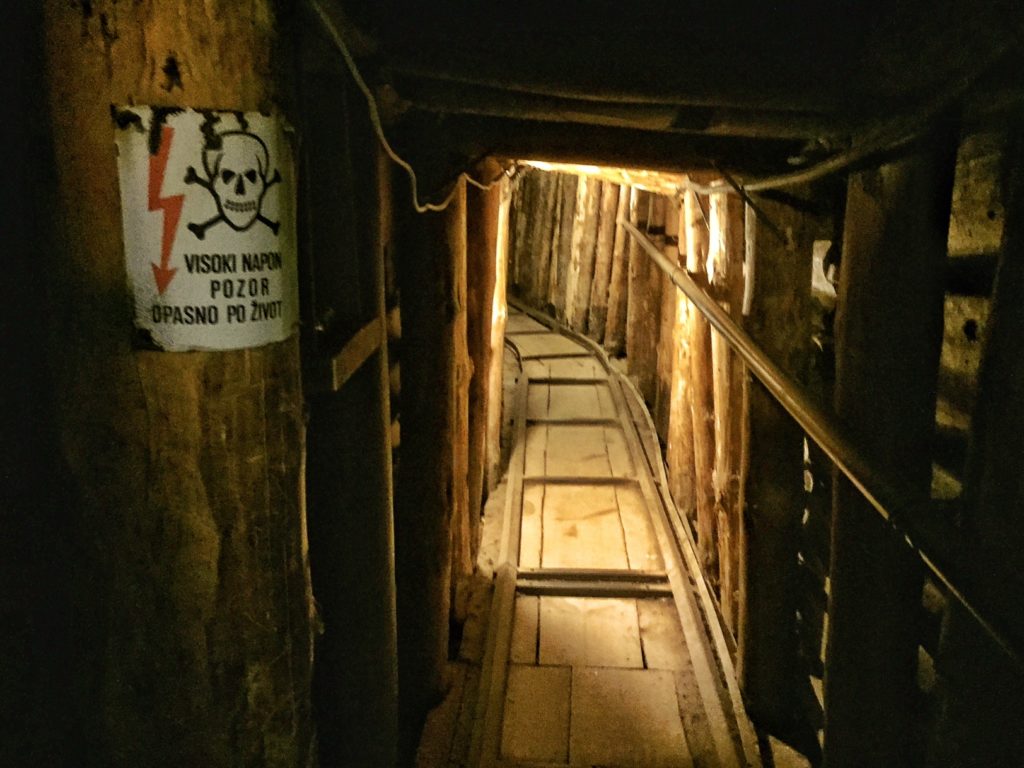
Sarajevo Roses
A macabre art installation of sorts, Sarajevo Roses are the literal scars that the ground bears from mortar shell explosions. Artists painted these wounds blood red to symbolize and memorialize the life lost in that spot. You can see one nearby Susan Sontag Square and another at the Tunnel of Hope museum, and there are many more scattered throughout the city. On average, 330 shells exploded in Sarajevo per day over their nearly 4-year-long siege, leading to these scars all over the city. They are slowly being replaced over time. I suppose part of this is the healing process, but another part of me hopes that they keep them to honor the lives lost by people who were too proud of their beautiful city to leave it and lost their lives defending and living in the place they loved. Remembering is the least we can do.
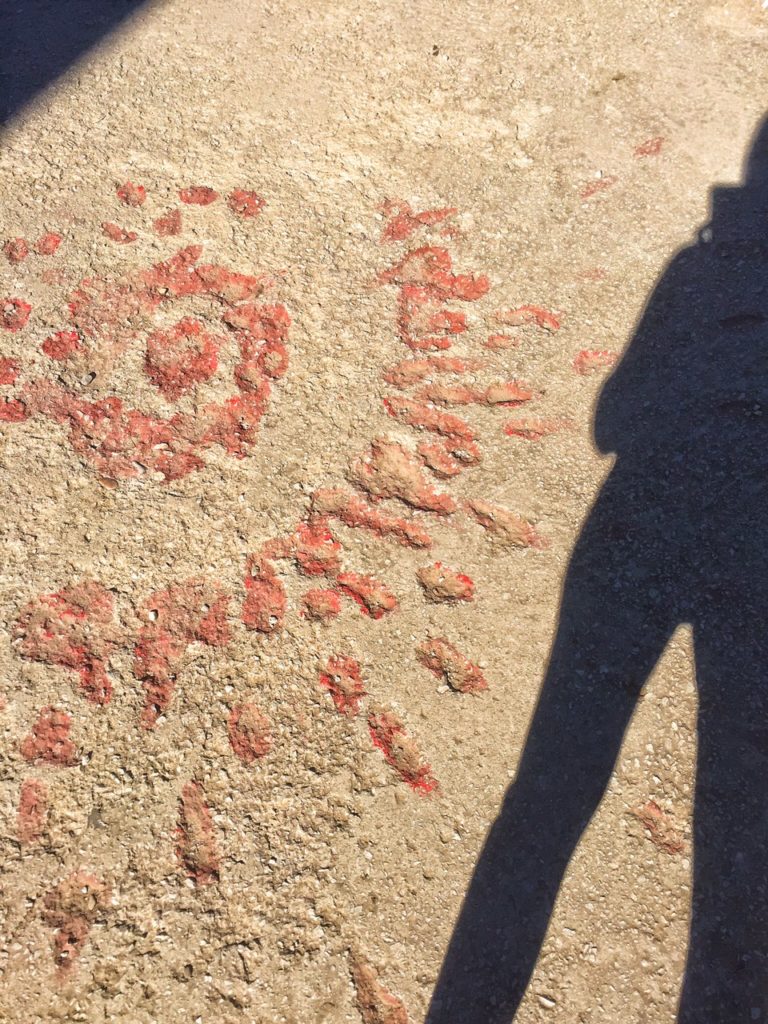
A few notes to understand:
– Bosnian refers to any citizen of Bosnia and Herzegovina. Bosniaks are an ethnic group within Bosnia, distinct from Serbs, Croats, and other much smaller minority groups (Romani, Albanian, and Montenegrin) who also live in Bosnia. Bosniaks are traditionally Muslim. Bosniaks were victims of genocide by Serbian forces during the wars of the early 1990s. For far more eloquent and detailed information than I can relay on this blog post, please please please go to the Gallery 11/07/95 in downtown Sarajevo to learn what happened to the victims of Srebrenica and other sites spread throughout Bosnia.
– The country is officially known as Bosnia and Herzegovina but I’ve called it Bosnia for short. Bosnia and Herzegovina are two historical regions that form one federation. There is also a separate semi-autonomous region of Bosnia, called Republika Srpska, which is majority Serb. If that wasn’t confusing enough, there are three presidents and 13 prime ministers, officially making Bosnia the most confusingly-governed nation in the world.
Enjoyed the post? Pin it or share it!
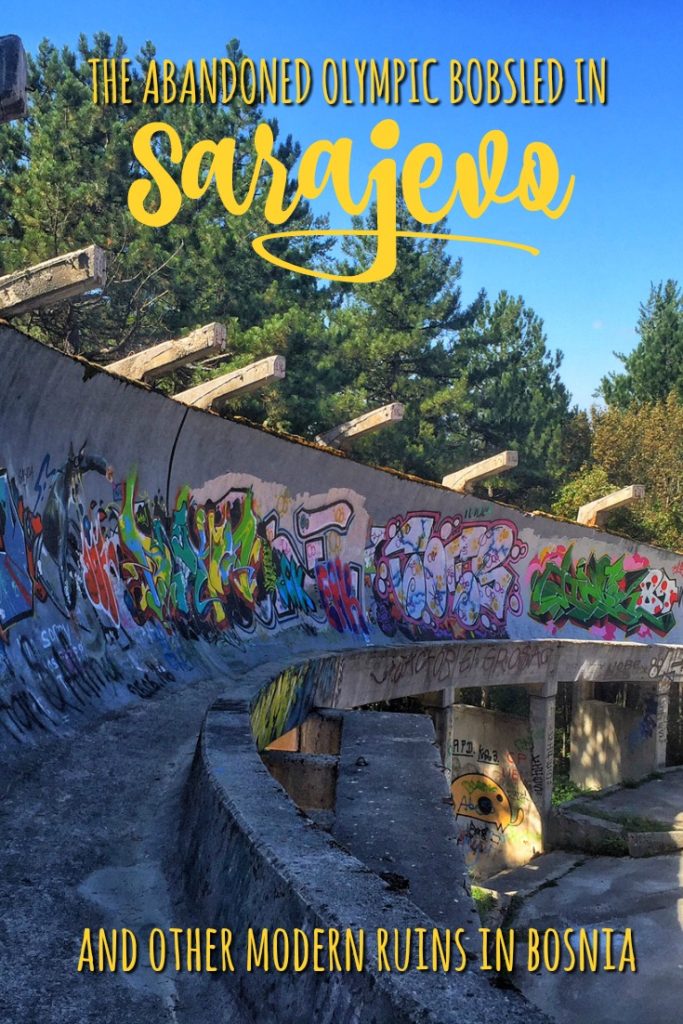
Allison Green is a former teacher who has been travel blogging since 2016. She has a Masters in Teaching and a B.A. in English and Creative Writing. Her blog posts merge her background as an educator with her experience traveling to 70+ countries to encourage ethical, meaningful travel. She has been a speaker at the World Travel Writers Conference and her writing, photography, and podcasting work has appeared in National Geographic, CNN Arabic, CBC Canada, and Forbes, amongst others. Now a full-time traveler, she has lived in Prague, Sofia, New York City, and the San Francisco Bay Area.
